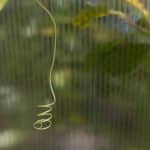Creating the perfect environment for your reptile companion is a crucial aspect of pet care. Whether you’re a seasoned herpetologist or a first-time snake owner, designing a multi-level habitat for an arboreal snake is a rewarding but complex process. In this detailed guide, we will explore the step-by-step process of setting up a multi-species terrarium, paying close attention to the needs of arboreal snakes and how to provide the best care possible. We’ll delve into the features of an ideal enclosure, the role of heat and water, the importance of enrichment, and how to build a safe and comfortable space for your animal.
Choosing the Best Enclosure
Before anything else, picking the right enclosure is your primary focus. The cage should be large enough to allow room for your snake to move and climb comfortably, as arboreal species are known for their love of heights. Your goal is to mimic the natural environment of these animals as much as possible.
In the same genre : How to Teach a Dog to Alert to Specific Sounds for Deaf Owners?
Glass terrariums are a popular choice due to their durability and the clear visibility they provide. More importantly, they hold heat well, which is essential for reptiles, and can be easily sanitized. The size of the terrarium will largely depend on the species of your snake, but as a rule of thumb, an adult arboreal snake will require an enclosure with a minimum height of three feet.
It’s essential to secure the top of the cage with a sturdy, well-ventilated lid to prevent your snake from escaping. The lid should be tight enough to keep the snake in but still allow for adequate air exchange.
Additional reading : What’s the Best Type of Exercise Wheel for a Dwarf Hamster?
Regulating Heat and Water
The health and wellbeing of your snake largely depend on proper temperature regulation and hydration. Reptiles are ectothermic, meaning they rely on external sources for heat. Therefore, the terrarium should have different temperature zones, allowing your snake to self-regulate its body temperature.
A heat lamp or a heat mat can be used to provide the necessary warmth. Place it at the top of the enclosure to create a ‘basking’ spot, while the lower levels should be at room temperature. This gradient will allow your snake to choose its preferred temperature.
Water is equally important. Snakes hydrate not only by drinking but also through their skin. Therefore, a shallow dish with fresh water should always be available in the enclosure to provide drinking water and help maintain humidity levels.
Enrichment and Climbing Opportunities
Arboreal snakes are climbers, and the enrichment of their habitat should reflect this. Branches, vines, and platforms provide excellent climbing opportunities and also serve as hiding spots.
Artificial plants and foliage can also be used for decoration and to provide cover. Although real plants can be used, they require extra care and may not withstand a snake’s weight. Therefore, artificial plants are usually the more practical choice.
Ropes and ladders can also be added for additional climbing and enrichment. Just ensure they are securely fastened to prevent any accidents.
Building a Multi-Level Habitat
Having established the basics, the next step is to create a multi-level habitat for your snake. Start by adding a substrate to the bottom of the enclosure. Cypress mulch, aspen shavings, or newspaper can be used. The substrate helps to absorb waste and excess moisture, contributing to the overall cleanliness of the cage.
Next, add the climbing features. Secure branches in a way that they span from the bottom to the top of the enclosure, creating a network of pathways for your snake to traverse. Attach platforms at different heights for your snake to rest and bask.
Finally, install the heat source and position the water dish. Monitor the temperature and humidity levels regularly to ensure they remain within the appropriate range for your snake species.
Choosing the Right Snake Species
Not all snakes will thrive in a multi-level habitat. It’s therefore essential to select a species that naturally enjoys climbing.
The Green Tree Python and the Emerald Tree Boa are popular choices among arboreal snakes. They are known for their stunning colors and unique behavior. However, they require specific care and are not recommended for beginners.
For those new to snake care, the Corn Snake can be a great choice. Although not strictly arboreal, they appreciate climbing opportunities and are generally easy to care for.
Remember, a snake’s specific needs can vary depending on its species. Always do thorough research or consult a reptile expert before bringing a snake into your home.
Creating a multi-level habitat for an arboreal snake can be a challenging yet rewarding task. By ensuring the correct enclosure, heat and water regulation, and providing enrichment opportunities, you can create a safe and comfortable home for your snake to thrive.
Selecting Appropriate Accessories for the Enclosure
The interior of your arboreal snake’s enclosure is as crucial as the initial choice of habitat. Properly outfitting their environment not only keeps your snake healthy but also promotes behaviors typical of their species.
When creating the interior of the enclosure, keep in mind the natural habitat of your snake species. For instance, the bioactive enclosure is an increasingly popular choice among reptile keepers. This type of setup includes live plants, natural substrate, and a community of beneficial insects that work together to mimic a reptile’s natural ecosystem.
However, cork bark, rocks, and branches can also be used to create climbing structures inside the enclosure. These materials are particularly effective for arboreal snakes, as they can grip onto them easily. When installing these items, always ensure they are firmly anchored to prevent any accidents or mishaps.
Exo Terra and Bio Dude provide a range of reptile-safe products that can help create an authentic and safe environment for your snake. Their selection includes UVB lighting solutions, heat lamps, and climbing structures specifically designed for arboreal reptiles.
Remember, a good setup should also provide hiding places for your snake to escape and rest. Many species of arboreal snakes, such as boas and pythons, appreciate a canopy hide. These can be hung from the top of the enclosure and should be broad enough for your snake to curl up inside comfortably.
Maintaining the Health of your Arboreal Snake
Keeping your arboreal snake healthy goes beyond just creating a suitable habitat. Regular monitoring and maintenance are key to ensuring that your pet thrives.
Ultraviolet light, for example, is essential for most reptiles, including arboreal snakes. These lights mimic the sun’s natural rays and promote Vitamin D3 synthesis, which is crucial for calcium absorption and bone health. Therefore, a UVB light source should be included in the enclosure setup.
Periodic checks on your snake’s body temperature and humidity levels within the enclosure are also crucial. Fine-tuning your heat and light sources will help maintain these levels within the optimal range for your particular species. In case of irregularities, it would be best to consult a reptile vet or a trusted reptile expert for advice.
Cleaning the enclosure is another aspect of maintenance that should not be overlooked. Regular cleaning prevents the build-up of waste and harmful bacteria. While bioactive substrates can break down waste naturally, you might still need to spot-clean occasionally. Paper towels can be used for this task, and any soiled substrate should be replaced promptly.
Moreover, proper nutrition is crucial for the health of your snake. Understand the dietary needs of your particular species – whether it’s a boa constrictor or a corn snake. Apart from feeding your snake an appropriate diet, you should also supplement its meals with vitamins and minerals as required.
Conclusion
Creating a multi-level habitat for an arboreal snake can be a gratifying endeavor. Providing a stimulating and naturalistic environment helps nurture the natural behaviors of these fascinating creatures. Remember to choose the right enclosure, regulate heat and water adequately, and offer plenty of climbing structures and hiding places.
Keep in mind the needs of your specific snake species, ensuring that everything from the overall habitat design to the smallest details aligns with their natural tendencies and preferences. After all, your aim is to recreate their natural habitat as closely as possible. Always monitor the health of your snake and maintain regular cleaning routines to ensure they live a long, happy, and healthy life.
Whether you’re setting up a habitat for a corn snake, a boa constrictor, or any other arboreal snake, the key is to provide a safe, comfortable, and stimulating home. With the right care and attention, your arboreal snake can thrive in its new multi-level habitat, providing you with endless fascination and joy.






